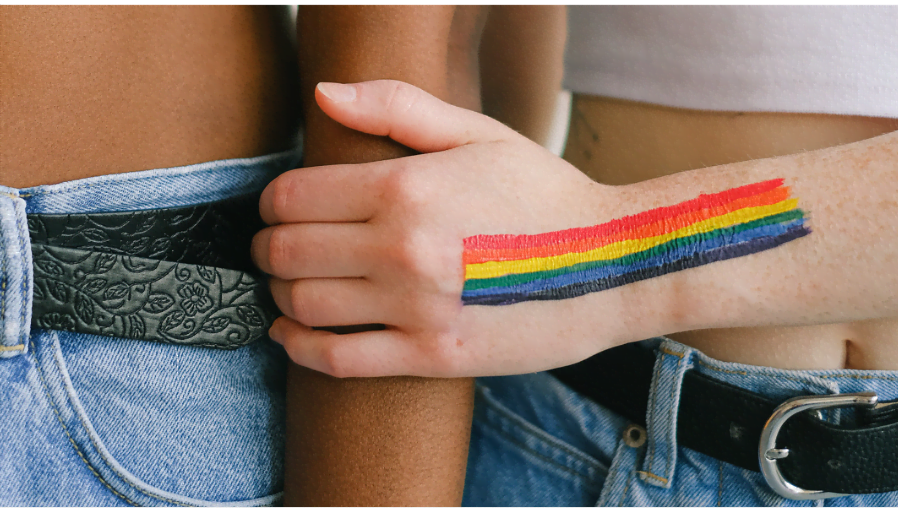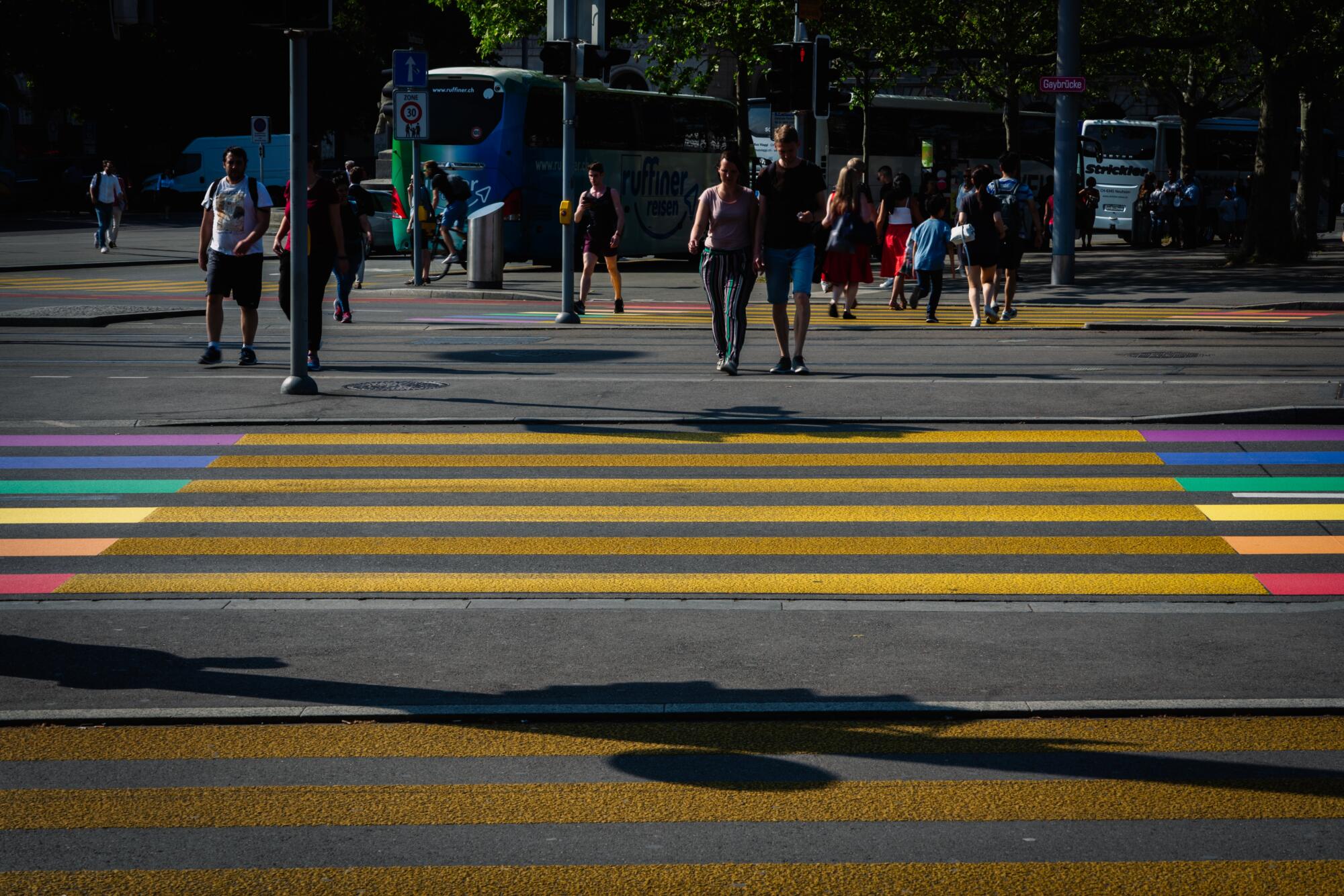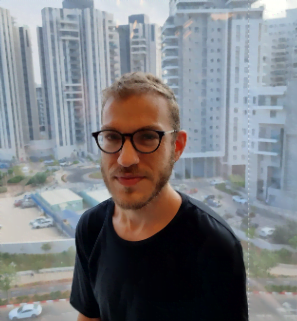Queer mobilities
The transport-related social exclusion of LGBTQ+ people (here also referred to as queer) remains largely underexplored. To shed some light on this topic, we talked with the authors of the must-read article 'Queer mobilities: critical LGBTQ perspectives of public transport spaces'.

Queer joy in transport and the urban space. Credit: Uriel Mont / Pexels
Despite efforts to create more inclusive societies, LGBTQ+ people still face discrimination in everyday urban public space. Moreover, transport-related social exclusion has been studied in depth along the lines of race/ethnicity, disability, income, and age, yet sexual and gender-nonconforming identities remain largely underexplored. Raising awareness and showcasing possible solutions for the issue, are, therefore, a must to ensure a successful just transition of transport.
In honour of Pride Month 2022, we created two articles to shed a light on gender-based violence and violence against LGBTQ+ people across our transit systems and share our members' bold efforts: Queering public space for all and Mind the queer public transport gap. From Barcelona to Bologna, and from London to Leuven (and more!), POLIS members have been leading the way when it comes to taking actual action and walking the talk.
However, a month is not enough to properly address the challenges and solutions at hand. After some work and reflection, we are now coming back for an in-depth interview with Professor Karen Lucas, Dr Martin Zebracki, Amos Weintrob, and Luke Hansell, authors of ‘Queer mobilities: critical LGBTQ perspectives of public transport spaces’, a must-read study in the field published in the academic journal Mobilities in 2021.
From the importance of adopting an intersectional lens to practical solutions, we discussed a wide array of issues around queer mobilities, but most importantly how to lead, or queer, the way.
POLIS: Public transport is a particularly unsafe/dangerous space for lesbian, gay, bisexual, trans and queer (LGBTQ+) people, more than city streets themselves – and this is especially the case for trans and gender non-conforming individuals. Could you further elaborate as to why and how as highlighted by your research article ‘Queer mobilities: critical LGBTQ perspectives of public transport spaces’?
Luke (Hansell): Our research highlighted the invisibility that LGBTQ+ people face when travelling on public transport. It also showed that they are often hyper-aware of their surroundings which in turn impacts their access to safe spaces. Moreover, it highlighted that trans women and non-conforming queer individuals suffered the most from acts of violence.

Luke Hansell
Luke Hansell is a 2017 alumnus of the University of Leeds, School of Geography and Institute for Transport studies graduating with BA (Hons) in Geography and Transport Planning. Luke now has over 5 years of experience working within the UK commercial aviation industry.
Amos (Weintrob): The mobility realm is not different from other public realms where queer people feel unsafe and experience violence. However, it is a realm that you cannot avoid since it is needed to get social and monetary capital. In the case of public transport, it is a space that requires a time of wait and one of stay – as in, once on a bus, metro, or tram, one cannot simply get off at any given time. With active mobility, you have more freedom to navigate to other locations; cycling, for example, allows you to be usually much faster. As always, we should look at this from an intersectional lens, and women face double discrimination. Public transport can be a very unsafe place, especially for queer, trans, and/or bi women.
Amos Weintrob
Amos Weintrob is a 2018 alumnus of the University of Leeds Institute for Transport Studies, graduating with MSc in Transport Planning. A public transport enthusiast, Amos has over 5 years of experience in transit planning and policy advancement. Advocate for sustainable, safe, and accessible cities.
Martin (Zebracki): There is great diversity within – there is not a single LGBTQ+ community. As explained in our article, other markers, such as socioeconomic class, ethnicity, and age, also come into play. This intersectional lens needs to be brought into the argument to make the point more complex while discussing the experiences of LGBTQ+ people navigating public transport spaces; it is a window to understand larger patterns of exclusion and marginalisation. It is also about raising awareness and highlighting hegemonies – including hetero-patriarchy that is dominating many dimensions of everyday public life, including public transport – without setting them apart from other everyday domains such as housing, education, and work.
Martin Zebracki
Dr Martin Zebracki has published widely across public-art practice, sexuality, digital geography, and social inclusivity. Zebracki leads the AHRC-funded project Queer Memorials and ESRC-funded impact project LGBTQ+ Inclusive Fieldwork and chairs the RGS-IBG Space, Sexualities and Queer Research Group.
Karen (Lucas): Moreover, I do not think LGBTQ+ individuals are necessarily more disadvantaged than any other disadvantaged group. Our research aimed to raise awareness about the fact that there is a diverse group of people who are currently overlooked within public transport policymaking, particularly as we get into the issues of safety and harassment.
Karen Lucas
Dr Karen Lucas is Professor of Human Geography and Director of Research in the Department of Geography within the School of Environment, Education and Development (SEED) at The University of Manchester. She is deputy director for the Manchester Urban Institute and leads its Transport and Mobilities Group.
POLIS: You (Amos and Luke) were in charge of acquiring the empirical data for the research. How did you devise the research to ensure its success and adequately include LGBTQ+ people? What surprised you the most about it, and what challenges did you find?
Luke: I was fortunate to be involved with some LGBTQ+ groups in Leeds, through which I was able to spread the word about my research and its survey, which was then shared from person to person. This was how I was able to meet people willing to be interviewed to gather data. The most surprising aspect for me was how engaged the participants were in the research; they were very keen and willing to share their opinion on the topic and their experiences. It was however extremely challenging to find literature concerning queer mobilities: the (very little) existing literature only briefly touched on queerness or featured it as a side point in a larger piece on travel safety.
Amos: As previous studies proved, social capital is much more important for queer people than for non-queer ones. This is because many in queer communities do not get much family support, which leads to them relying more on their fellow queer friends. Public transport is therefore key, as it allows them to move through the city and get to meet each other. We need better public transport that allows queer people to get from those places to the big cities where we see more diverse communities and safe spaces.
My research in Tel Aviv showed that the large majority of respondents faced violence at least once while using public transport: the number was quite similar to Leeds’. What really surprised me is that, despite those numbers, most of the respondents did not limit their going out, even when they knew the chances of them facing violence were very high. Queer people, as shown throughout history, show a lot of resistance: they compromise their identity, their visibility, and their safety to use transport modes; that is an invisible cost that transport or urban planners do not take sufficiently into account.

Queer joy in transport and the urban space. Credit: Cottonbro / Pexels
POLIS: The planning discourse has frequently overlooked LGBTQ+ communities. With the COVID-19 pandemic bringing along airs of urban renewal and a more significant will to improve our cities and the quality of life of their citizens – has this changed? If so, to what extent?
Karen: The public transport world is still very patriarchal and straight, white, and male-dominated, and there needs to be much more awareness of diversity to recognise that there are different needs. Transport for London, for example, has had a good recognition of issues around queer mobilities. They have recognised that this group needs to be protected and made aware of, and have put in place different mechanisms, including training programs for drivers, security people, and traffic officers, among others.
Amos: A lot of queer people live in low-income neighbourhoods and do not own a driver's license or a car, which makes them more dependent on other mobility modes, such as public transport. However, planning discourse often overlooks marginalised communities: people with disabilities, queer people, women, teenagers, and elderly people, which are the biggest groups that use public transport.
There seems to be some change happening, nevertheless, as we see more diverse planning teams that can result in better planning discourse and implementation. That is something that is happening but not yet everywhere.
POLIS: What are real, practical solutions that local and regional authorities and public transport operators should implement according to your experience and research? What should they consider while devising them to ensure they work?
Luke: Public transport can become safer through security measures such as increased visibility of CCTV and policing officials, and also through education; teaching those who create unsafe spaces to learn about the negative impact that they are causing is crucial.
Amos: Very simple and sometimes inexpensive steps can go a long way: think of pride flags at bus stops throughout the year, showcasing diverse people and families using public transport but also enhancing visibility, lighting, and cleaning. Having a reliable transport network with better information can also ease the feelings of unsafety, and so can instructing public transport workers such as drivers on properly addressing queer people and facing sexual harassment.

Queer joy in transport and the urban space. Credit: Anna Shvets / Pexels
Our research showed that travelling during the weekend and at night is very important for queer people. However, public transport is less frequent during such times, which means that queer people are often offered a less reliable, less frequent, and quite unsafe travel experience even when their demand as frequent and avid users would call for improvements. Last but not least, adapting transport options to different types of bodies could also be a solution: it can be as simple as lowering handles or having seats that can accommodate people with different types of bodies (because a lot of the design has been historically relying on cisgender men’s bodies).
Martin: If you want to include all members of society then you must involve as many representatives as possible of different communities and give them visibility and recognition. Measures like creating rainbow signs can help, but they might become mere acts of performative solidarity if no actual change is made for the concerns of those populations. And you can only do that by fully involving them in the planning, implementation, and evaluation processes.
Karen: Initiatives like Transport for London’s ‘Zero tolerance’ campaign, focused on reporting discriminatory harassment in public transport, are also useful. So, calling it out, reporting it, having proper reporting channels, and having it taken seriously when those reports are made – that is how public authorities genuinely show that they have a proper dedicated understanding of the issue. Moreover, in the UK, we have an Equality Act. One of the things in the Equality Act is that you have to take out equality assessments, and LGBTQ+ communities are included as a protected group.
If you want to include all members of society, you must involve them and give them visibility and recognition.
- Martin Zebracki, Associate Professor of Critical Human Geography at the University of Leeds

Pride celebrations. Credit: Justin Luca Krause / Unsplash
POLIS: Last but not least: What would you like for local and regional authorities and public transport operators to understand about queer mobilities?
Luke: I would like them to read and understand our study. The clear lack of previous research in this area leaves a gap in authorities’ data and, in turn, will less likely influence policy. Although the perception of fear and negotiating spaces safely affects everyone, certain segments of the LGBTQ+ community are more negatively impacted than others.
Karen: It is not just transport; we need to start fundamentally thinking about urban accessibility. It is not just access to public transport, but what public transport gives us access to, as well as micro modes, and this is usually overlooked. We need a whole system assessment of whether these services are truly inclusive.
Martin: Some quick gains can be made in terms of visibility, but the path to recognition, inclusive design, and full access for all people can be a very long one. We might not think that hard about this path to actual recognition and inclusion if there is a reiterated focus on visibility only, so that needs to be challenged.
Amos: It does not matter how good planning is if it is going to allow violence and queerphobia to exist. And the only way to change this is via representation, inclusive discourse, and education, as said. We can only do that by using data and bringing in organisations like POLIS Network to talk about and explain the importance of investigating those issues.
Sustainable policies and practices are currently important to providing safe and climate-aware modes of public transport, but they should also provide accessibility-aware and affordable ones that increase opportunities for queer people to make the most of their participation in public transport.
Click here to read the article in its original format.
About the authors:
Marina Martin Vilches is Project & Communications Officer at POLIS Network. Specialised in Urban Governance, she currently provides support for POLIS’ corporate communications with a focus on social media, also working on electromobility projects. She is passionate about active travel, inclusive mobility, and innovative governance approaches.



